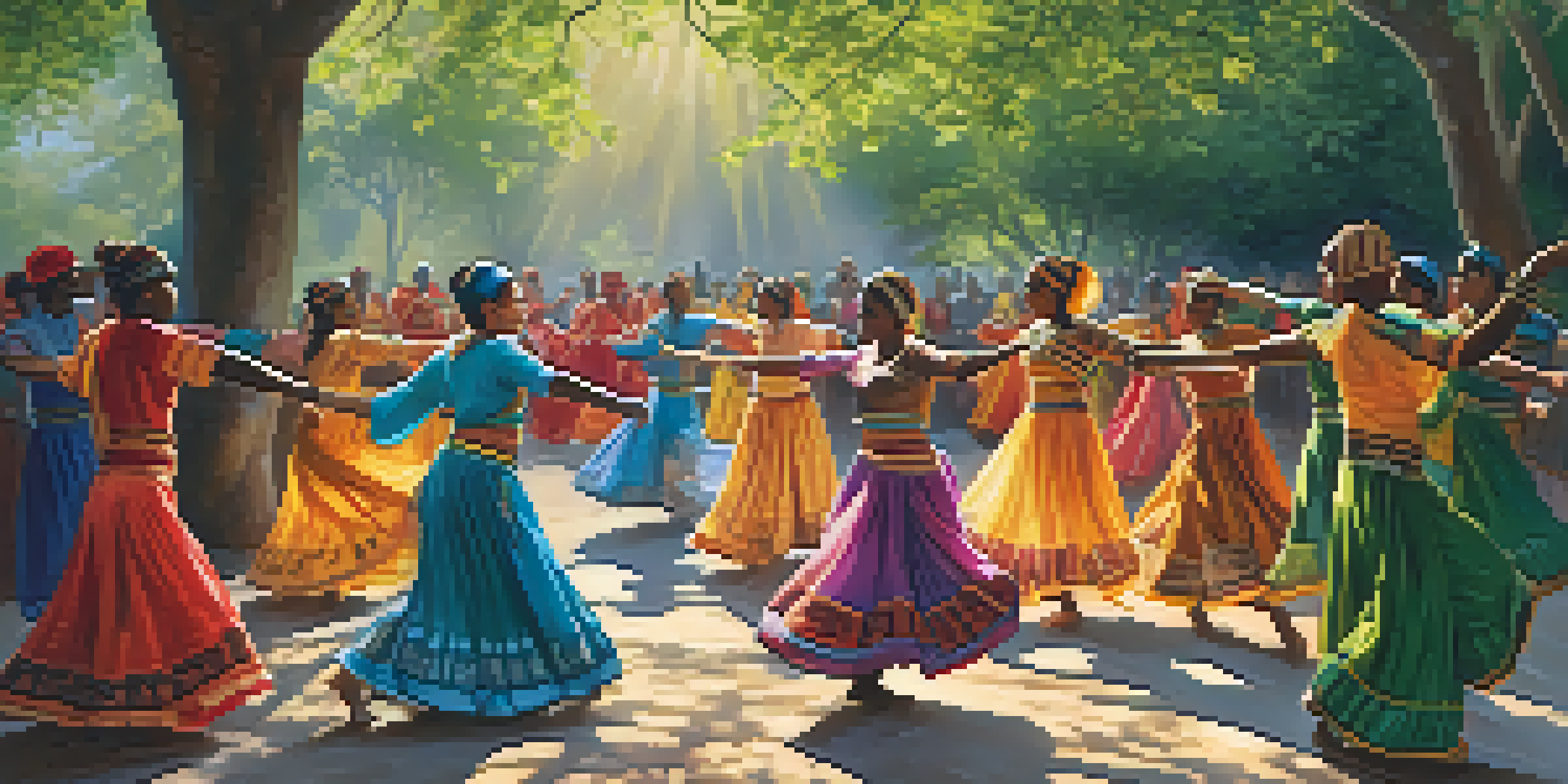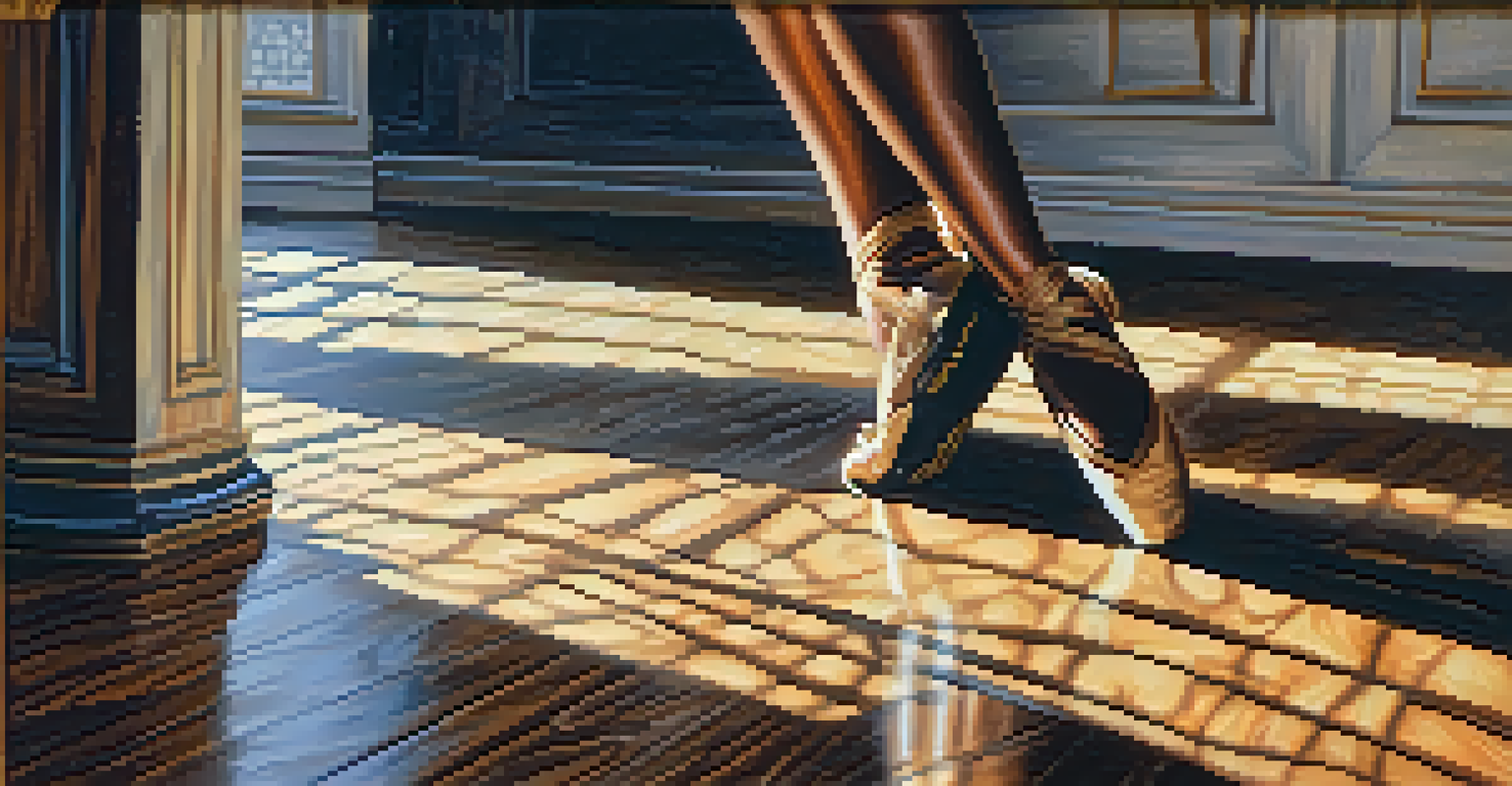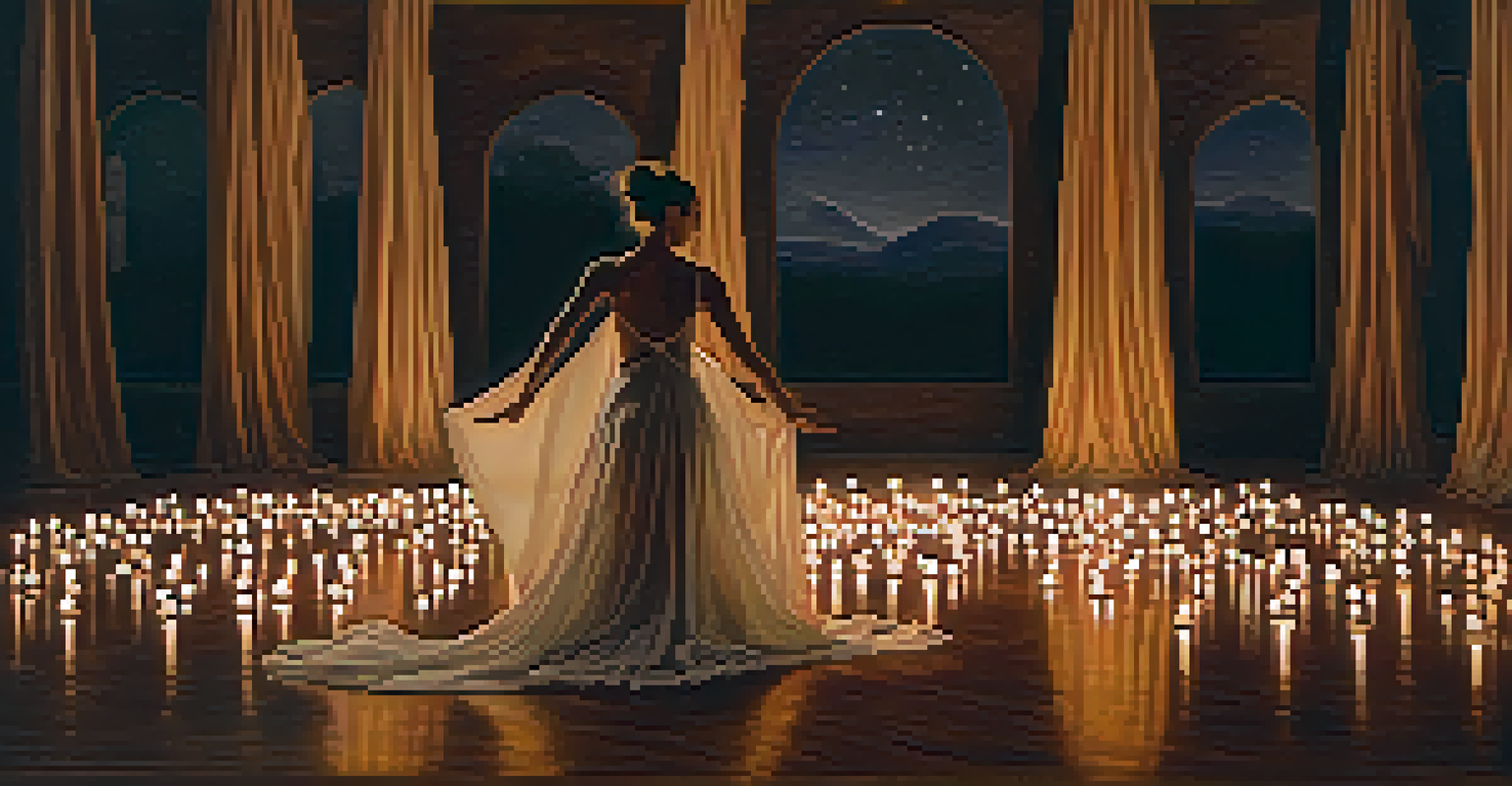The Role of Dance in Communicating Spiritual Experiences

Dance: A Universal Language of Spirituality
Dance transcends cultural boundaries, acting as a universal language that expresses spiritual experiences. People across different cultures have used dance to convey emotions, beliefs, and connections to the divine. For instance, traditional folk dances often reflect the spiritual relationship a community has with nature and their deities.
Dance is the hidden language of the soul.
This form of expression allows individuals to connect with something greater than themselves, often leading to profound personal insights. Through rhythmic movements, dancers can convey feelings that words may fail to articulate, creating a shared experience with their audience. This shared understanding fosters a sense of community and belonging, essential elements in spiritual journeys.
Moreover, dance can serve as a ritualistic practice in many spiritual traditions, reinforcing the idea that movement is a powerful tool for connecting with the sacred. From the whirling dervishes of Sufism to the ecstatic dances of indigenous tribes, these practices illustrate how dance can evoke a deep sense of spirituality and transcendence.
Historical Significance of Dance in Spiritual Practices
Throughout history, dance has played a pivotal role in spiritual practices worldwide. Ancient civilizations, such as the Egyptians and Greeks, integrated dance into their religious ceremonies, believing it was a way to communicate with the gods. These historical roots highlight the long-standing connection between movement and spiritual expression.

In many cultures, specific dances were reserved for sacred events, such as harvest festivals, rites of passage, and religious observances. These dances often served as a means to invoke blessings, celebrate life, or mourn loss, illustrating the multifaceted role of dance in human spirituality. By understanding these historical contexts, we gain insight into how dance functions as a bridge between the physical and spiritual realms.
Dance as a Universal Language
Dance transcends cultural boundaries, serving as a powerful means of expressing spirituality and connecting with the divine.
As modern spirituality evolves, these age-old practices continue to influence contemporary dance forms. Today, many spiritual practices incorporate dance to foster deeper connections, making it clear that the historical significance of dance remains relevant in our quest for meaning.
Dance as a Tool for Personal Spiritual Exploration
On an individual level, dance can be a powerful tool for personal spiritual exploration and growth. Engaging in dance allows individuals to tap into their emotions, facilitating a deeper understanding of their inner selves. Whether it’s through free-form dance or structured classes, movement can help release pent-up feelings and promote healing.
The body says what words cannot.
For many, dance becomes a meditative practice, enabling them to enter a state of flow where they feel connected to their body and spirit. This state can lead to moments of clarity and insight, allowing individuals to explore their spirituality in a safe and expressive manner. The act of moving in rhythm can also create a sense of unity with the universe, providing a profound spiritual experience.
Moreover, dance offers a unique way to celebrate one’s identity and beliefs, fostering personal empowerment. By embracing their unique styles and movements, individuals can express their spiritual journeys, creating a tangible representation of their inner growth.
Community and Dance: Strengthening Spiritual Bonds
Dance not only facilitates personal expression but also strengthens communal spiritual bonds. Group dances, whether in religious settings or social gatherings, create a sense of unity and shared purpose. This collective experience fosters a deeper connection among participants, reinforcing their spiritual ties.
In many cultures, communal dance is integral to celebrations and rituals, highlighting the importance of togetherness in spiritual practices. The act of dancing together can evoke feelings of joy and belonging, making participants feel like they are part of something larger. This shared experience can enhance feelings of connection to both the community and the divine.
Historical Roots of Dance in Rituals
Throughout history, dance has been integral to spiritual practices, facilitating communication with the divine and marking significant life events.
Additionally, the communal aspect of dance encourages collaboration and support among participants, creating a nurturing environment for spiritual growth. As individuals come together to express their beliefs and emotions through movement, they cultivate a strong sense of community that can be spiritually uplifting.
The Therapeutic Benefits of Dance in Spirituality
The therapeutic benefits of dance extend into the realm of spirituality, offering healing and self-discovery. Dance therapy has emerged as a powerful approach for individuals seeking to explore their emotions and spiritual identities. Through guided movement, participants can uncover hidden feelings and foster a sense of spiritual well-being.
Engaging in dance can also provide relief from stress and anxiety, creating a space where individuals can connect with their inner selves. As they express their emotions through movement, they may find clarity and peace, enhancing their spiritual experiences. This therapeutic aspect of dance encourages individuals to embrace their vulnerabilities and transform them into sources of strength.
Moreover, dance therapy often emphasizes the importance of body awareness, allowing individuals to reconnect with their physical selves. This connection can lead to a deeper understanding of the mind-body-spirit relationship, further enriching one's spiritual journey.
Dance and Ritual: A Pathway to Spiritual Enlightenment
Ritualistic dance is a significant aspect of many spiritual traditions, serving as a pathway to spiritual enlightenment. These dances are often performed during sacred events, invoking a sense of reverence and connection to the divine. Participants enter a state of heightened awareness, allowing them to experience profound spiritual insights.
The structured nature of ritual dance provides a framework for individuals to engage with their spirituality in a meaningful way. Each movement and gesture is imbued with significance, creating a powerful channel for expressing devotion and seeking guidance. This intentionality in dance can lead to transformative spiritual experiences.
Dance Fosters Community and Healing
Engaging in dance not only promotes personal spiritual exploration but also strengthens communal bonds, enhancing feelings of unity and support.
Furthermore, ritual dance fosters a deep sense of community and shared purpose among participants. As they come together to perform these sacred movements, they create a collective energy that enhances the spiritual atmosphere, making the experience even more impactful.
Conclusion: Embracing Dance as a Spiritual Expression
In conclusion, dance serves as a profound medium for communicating and exploring spiritual experiences. Its rich historical roots and therapeutic benefits highlight the importance of movement in our spiritual journeys. Whether through personal exploration or communal celebrations, dance allows individuals to connect with their spirituality in a unique and meaningful way.
As we embrace dance as a form of spiritual expression, we open ourselves to new insights and connections. This art form invites us to explore the depths of our emotions, fostering healing and growth in the process. In a world that often feels disconnected, dance provides a pathway to unity and understanding.

Ultimately, the role of dance in spirituality is a testament to the human experience, reminding us of our innate desire to connect with something greater than ourselves. By celebrating this connection through movement, we can find deeper meanings and forge stronger bonds with ourselves and each other.